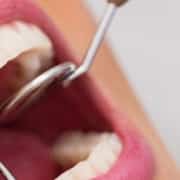What You Need to Know About a Full Mouth Restoration
Your teeth are designed to last a lifetime under perfect oral hygiene conditions. Unfortunately, our lifestyles and food don’t usually produce perfect conditions for healthy teeth. Therefore, at some point, you will probably need some form of dental treatment. And, if your oral health is bad enough, your dentist in Albany, NY, might recommend a full mouth restoration.
What Is a Full Mouth Restoration?
A full mouth restoration is a multi-layered treatment that involves readjusting your bite and rebuilding the functions of your teeth to restore your smile. That means instead of your dentist performing a single dental treatment, several procedures will be done in succession until your oral health is restored.
When Is a Full Mouth Restoration Needed?
Typically, you will need a full mouth restoration in Albany, NY; if you have multiple missing teeth, all your teeth are worn down, severely damaged, or anything else that significantly impacts your ability to chew or speak. Or if you have significant pain, trauma, advanced gum disease, or severe tooth decay.
What Treatments Are Included in a Full Mouth Restoration?
There are a variety of treatments your dentist might use for your full mouth restoration. The treatment will be based on your specific needs and the overall condition of your oral health.
Here are the treatments most commonly used for a full mouth restoration. It might include one or a combination of the following.
- Dental implants
- Dental crowns
- Bridges
- Dentures
- Veneers
- Gum surgery
- Teeth bonding
- Tooth extractions
Are You Looking for a Reputable Dentist in Albany, NY?
If you need relief from your dental issues, please Contact Dental Wellness of Albany today to schedule an exam. We will provide you with a customized treatment plan that will help restore your oral health.







